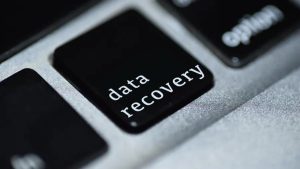It’s done. Your computer may have just crashed or you might have deleted photos accidentally. Isn’t that heartbreaking? You can still keep going! The following guide can help you to retrieve lost data while avoiding common pitfalls. Take a sip of coffee as we begin. Visit A – Z Data Recovery Guide before reading this.

First, you must stop using the gadget! The importance of this step can not be overstated. Continued usage can wipe out the data you want to keep. Consider it as if you were scribbling a sketch over.
Software Solutions:
Data retrieval programs are available in a variety of formats. Recuva Data Recovery Wizard or Disk Drill are three names that you can remember. Although each program has its own specific features, they all work by scanning the drive to find remnants of previously deleted files.
Imagine your drive as a huge library. You can think of deleting a folder as removing a book from a catalog. However, the actual book will still be on your shelf. Software that recovers data can help you track down the lost book. Install these programs to a drive other than the one you want to use to avoid overwriting data.
Navigating Interface:
A simple user interface will usually greet you when you start the software. Then, select the drive on which your files are located. Choose Drive C. In the meantime, you can watch some cat videos.
You will receive a report after scanning. The process can seem a lot like a game of treasure hunting. You may find it. To avoid issues with overwriting, always save files recovered to another drive. Like putting all your findings in a vault.
Memory cards and external drives:
It is also possible to recover lost data from an external drive, memory card or flash drive. Connect the external device to your PC and perform the same scanning steps and data recovery. Strangely, external devices tend to be easier to salvage. Did you know?
Physical Damage Drama
The situation becomes more complicated if the storage device itself is physically damaged. The software will not suffice. You could need the professional assistance. You can think of it as calling in the cavalry. This group uses specialized equipment and cleanroom conditions to take apart your drive in order to retrieve the data. This is not inexpensive, but if your data are valuable, the price can be well-worth it.
Preventive measures:
It’s here that an ounce is worth a pounds of cure. Backing up regularly can be life-saving. If you have multiple copies, it can help save future pain. Consider it similar to having multiple sets keys.
Set up a check-up routine on your hard drive or other storage device. It is said that “a stitch in time will save nine”. The regular maintenance of your vehicle can detect issues before they escalate into full-blown problems.
Handling Corrupt Files
Stellar Phoenix or PhotoRec, for example, can change the game when it comes to corrupted data. The tools allow you to repair and access parts of the file that other recovery programs may have missed. The Swiss Army Knife of data problems.
Quirky situations
Remember those times when the normal script doesn’t work? A friend of mine accidentally formatted a hard drive. TestDisk is open-source and free software that can be used for emergencies. He was able to recover almost all of his data. It’s like having an angel of protection in digital form.
In the midst of all this confusion, one goal stands out: getting back your valuable data. The process doesn’t need to be stressful if approached calmly and methodically. There are experts you can turn to if DIY projects fail. You shouldn’t just throw your PC out of the window. Windows and computers don’t get along, so don’t do it!
That’s all there is to it. Now that you have the necessary knowledge, it’s time to take on most data-recovery challenges. Let’s go and find those gems.